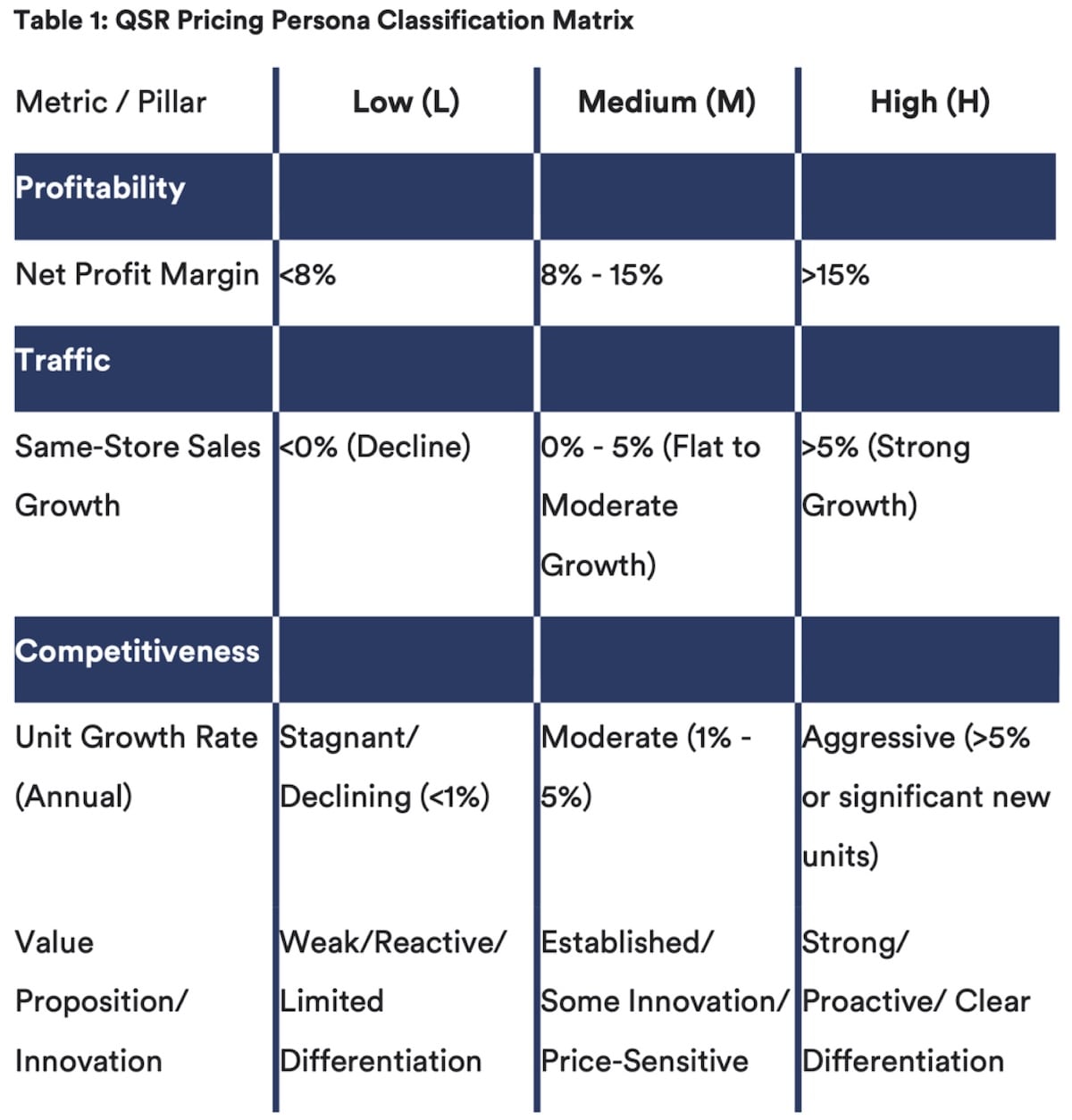The ultimate goal for any QSR brand is to achieve the “Market Leader” persona—a harmonious balance of high profitability, robust traffic, and a strong competitive advantage. This position is not a destination but a continuous state of evolution, where brands consistently demonstrate stability through quality and a strong brand, while also showcasing agility by adapting to new trends and market demands. This continuous adaptation is what sustains high traffic, robust profitability, and a durable competitive edge.
The Power of Data: Precision over Intuition
Market Leaders don’t operate on gut feelings; they rely on data-driven pricing and analytics to make informed decisions. The foundation of this approach is a set of measurable Key Performance Indicators (KPIs) that provide a comprehensive assessment of a brand’s position.
- Profitability Metrics: Market Leaders closely monitor metrics like Net Profit Margin, which reflects overall financial efficiency, and Food Cost Percentage (COGS) and Labor Cost Percentage, which indicate the effectiveness of cost control and operational efficiency. Top performers often achieve profit margins far exceeding the QSR average of 6-9%.
- Traffic Metrics: To understand customer demand, Market Leaders track Same-Store Sales Growth (SSSG) and Customer Visit Trends (Transaction Growth), isolating changes in customer volume from price increases. They also measure Digital Sales Penetration, which indicates a brand’s adaptation to modern consumer behavior and capacity for future growth.
- Competitiveness Metrics: A brand’s market edge is quantified by its Unit Growth Rate, signaling its expansion strategy, and by a qualitative Innovation Index, which measures the adoption of new technologies and menu advancements.

By leveraging this data, Market Leaders can move beyond the “discount trap” and make strategic pricing adjustments, ensuring that every decision contributes to the brand’s long-term health rather than just short-term gains.
Strategic Agility and the “Experience-Value Equation”
The QSR market is in flux, facing an “adaptation imperative” where growth is not uniform but selectively rewards businesses that can effectively adapt their operational models and value propositions to shifting consumer demands. Market Leaders are masters of this agility. They consistently solve the “experience-value equation” by delivering perceived high value through a combination of quality, convenience, and a positive brand experience, rather than solely relying on low prices.
This means that true competitiveness is not just about reacting to rivals’ pricing. It’s about proactively shaping consumer expectations and consistently delivering a multi-faceted value proposition that justifies their pricing strategy and builds lasting customer loyalty. This is exemplified by brands like Chick-fil-A, whose competitive advantage stems from “unmatched service” and “quality chicken sandwiches”, and Chipotle, which focuses on “fast, fresh Mexican-inspired dishes with a focus on organic ingredients”. These brands command premium pricing and avoid direct price competition because they have cultivated strong brand loyalty.
Furthermore, Market Leaders embrace continuous innovation. This includes adopting new technologies like AI, automation, and self-service kiosks, as well as a commitment to menu innovation with new product launches and healthier options. By investing in robust digital infrastructure, they not only enhance convenience but also collect rich customer data, which can be leveraged to personalize offers and cultivate habit-forming behaviors that lead to a higher customer lifetime value.
Conclusion: The Path Forward
Sustainable growth in the QSR industry hinges on a harmonious and continuous balancing act among profitability, traffic, and competitiveness. Market Leaders achieve this position by leveraging operational efficiencies to bolster margins, strategically employing digital channels and loyalty programs to drive consistent traffic, and relentlessly innovating to maintain a strong competitive edge. The insights from this framework, such as the “efficiency premium” and the “differentiation dividend,” underscore the multi-faceted nature of pricing success.
Ultimately, the ability of QSRs to consistently adapt their pricing strategies and operational models in response to evolving consumer preferences, technological advancements, and economic pressures will dictate their long-term viability and growth trajectory. The brands that can best navigate these complexities, guided by data and a commitment to continuous refinement, will secure a leading position in the competitive restaurant industry.


